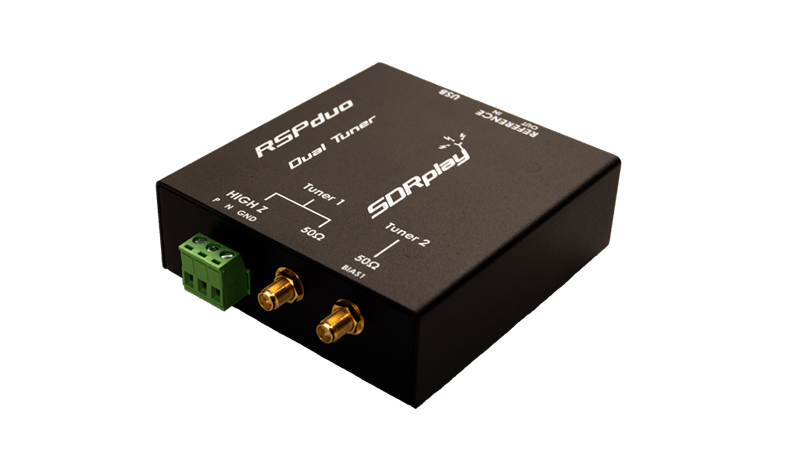There was a time when experimenting with software defined radio (SDR) was exotic. But thanks to cheap USB-based hardware, this technology is now accessible to anyone. While it is fun to play with the little $20 USB sticks, you’ll eventually want to move up to something better and there are a lot of great options. One of these is SDRPlay, and they recently released a new piece of hardware — RSPduo — that incorporates dual tuners.
We’ve talked about using the SDRPlay before as an upgrade from the cheap dongles. The new device can tune either a single 10 MHz band over the range of 1 kHz to 2 GHz, or you can select two 2 MHz bands. This opens up a lot of applications where you need to pick up signals in different areas of the spectrum (e.g., monitoring both sides of a cross-band repeater).
You may wonder how you can take advantage of the two tuners with software. There’s an online review that covers how the software works with the dual tuners. You can also see a video from [SevenFortyOne] that shows the radio in use.
In addition to dual band receive, a unit like this could be useful in building systems for cognitive radio, diversity reception, reducing noise, and radio location. You can find a spec sheet for the device which shows it has a 14-bit converter and several antenna, filter, and reference clock options.
You might think that for almost $300 you could buy more than one USB dongle and get the same result. There are a number of advantages to using the RSPduo, though. First, the performance of the RSPduo with its expanded converters and built-in filters will be better. It also has a wider frequency range than a cheap dongle. However, for any application where you want to understand the relationship between the two signals, using multiple USB devices will be tricky if not impossible. With the RSPduo, the data is on a single USB interface, so the data are correlated with no additional effort.
Not that it isn’t possible to use multiple USB devices, just harder. The RSPduo is very similar to the company’s earlier offereings, with the addition of an extra tuner. If you want to see how to use the RSPduo’s cousin, we did a GNURadio tutorial on the SDRPlay.
















I’m surprised using it in dual channel modes cuts down the bandwidth that much. I would expect a halving if they normally run two ADCs interleaved like how many scopes do it.
At a guess the reduced bandwidth is related to the “switching matrix” toggling the IQ ADC’s between the baseband of the two tuners.
i’m surprised they still claim 10mhz bandwidth which is more than the USB connection can handle.
I have done 13MHz at 2×8-bit through usb2.0. it is certainly possible. A better host should reach 20MHz or so
If you dig into the datasheet it is 8-bit (> 9.216 MSPS ), 10-bit (8.064- 9.216MSPS), 12-bit (6.048- 8.064 MSPS), 14 bit native ADC (2 – 6.048MSPS).
I can’t believe it’s not butter.
“If you think it’s butter, but it’s not! It’s Chiffon!”
It’s not nice to fool Mother Nature.
Have you noticed that the cheap USB TV sticks have all but vanished from the stores, and now you have to pay something like $80-90 because they’re all DVB-T2/C now.
Just do like we do and buy such stuff in China then.
It is a dirty proposition but I will keep with the HackRF.
Use this to get real time weather and ADS-B to a tablet and you’d have quite an interested following in the aviation community. Likewise VTS/AID plus weather for boaters in busy places.
“…two bands at once…”
So, like, I could listen to AC⚡DC /and/ Def Leppard, at the same time…? Coooool, dude…
;) :P
Isn’t that like listening to one track of Black Sabbath?
B^)
What’s the chances of setting the dual SDRs to build an interferometer for radio astronomy, using GNU software and an open source called Virgo? Is it possible to buy two of these and configure three, 3-meter dish antennas?